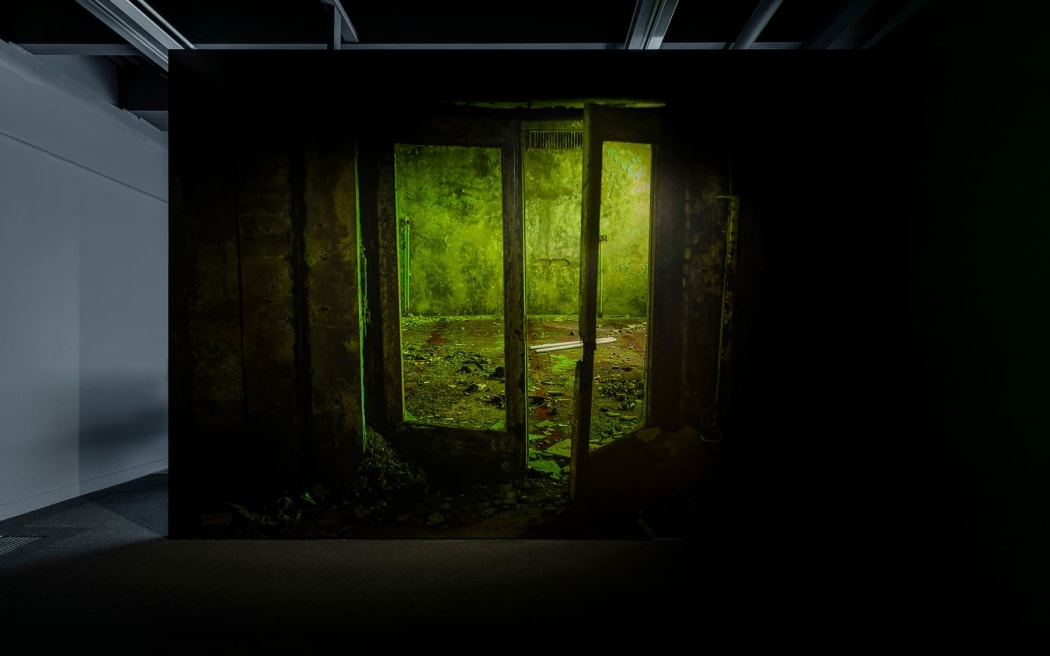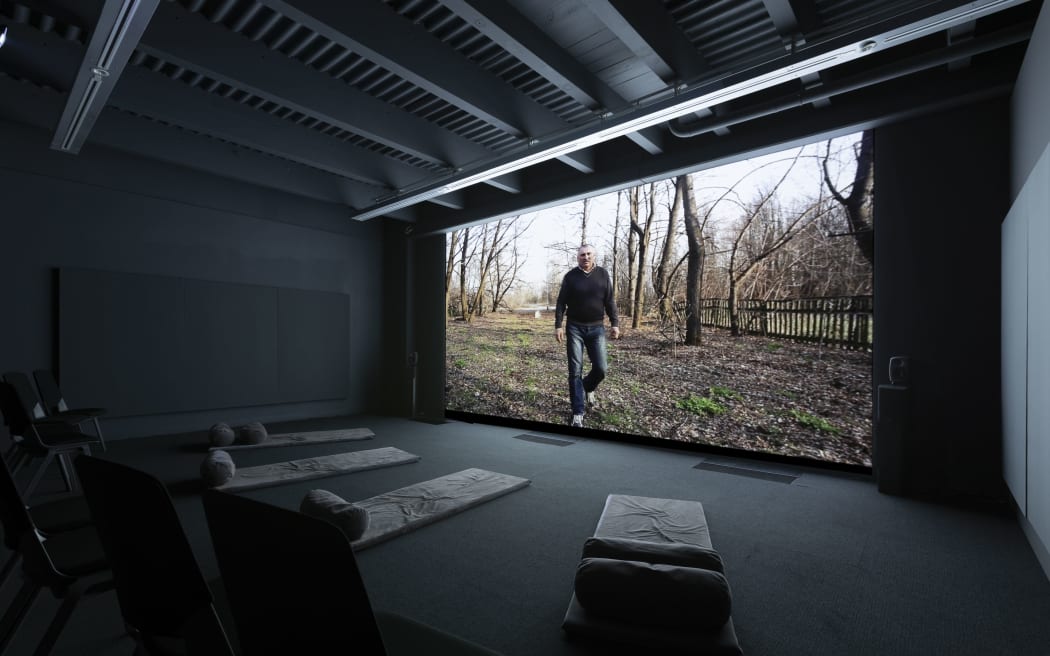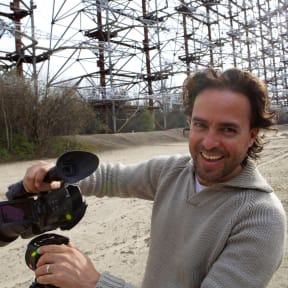
Raúl Ortega Ayala’s The Zone in exhibition Infrastructure at Adam Art Gallery Photo: Ted Whitaker
The disaster at the Chernobyl nuclear power plant - the meltdown, deaths, and eventual abandoning of the city of Pripyat, Ukraine - is the stuff of legend.
But Wellington-based artist Raúl Ortega Ayala isn't as interested in the catastrophe as he is in the damage done to ordinary people's lives.
Ortega Ayala has repeatedly visited Pripyat - along with Plymouth on the Caribbean island of Montserrat, which was decimated by a volcano in 1995 - to gather visual and aural memories from what remains in the rubble and people's thoughts with these abandoned cities.
He uses still and moving imagery and sound to examine the ways people remember, forget and repress the past.
Ortega Ayala's film The Zone is currently showing in the exhibition Infrastructure: Power, Politics, Imagination at the Adam Art Gallery in Wellington.
It focusses on the infrastructure provided for the people of Pripyat: what remains of their homes, their paths through the woods, a swimming pool, and a school. It looks at a cinema in which a married couple first met and a Ferris wheel that never opened.
“I loved the city very much, it was a very beautiful city,” one of the interviewees says, and in the ruins Ortega Ayala finds much new beauty.

Raúl Ortega Ayala’s The Zone in exhibition Infrastructure at Adam Art Gallery Photo: Ted Whitaker
But there is a pervasive sadness stemming from people having been severed from the place they loved.
“They sincerely believed they would go back,” another interviewee says. “That things would be OK.”
If the celebrated 2019 HBO series Chernobyl dealt with the human events around the explosion, The Zone considers what remains, both in the exclusion zone and in people’s minds.
The camera takes us into dark derelict spaces today to find light and nature returning.
Otega Ayala’s recent project Montserrat - a phono-archeology was recently exhibited in the Hague, in the Netherlands.
Montserrat was a British colony and holiday destination until a previously dormant volcano erupted. It buried the capital city of Plymouth and created a large uninhabitable exclusion zone.
Visiting the zone, Ortega Ayala kept finding objects that contained sounds or were connected to its production, including layers of vinyl records and tapes.
Beatles producer George Martin ran a famous recording studio, Air in Montserrat over the 1980s, recording everyone from The Police and Rolling Stones to Elton John.

Raúl Ortega Ayala filming in the Chernobyl Exclusion Zone Photo: supplied
Ortega Ayla focussed on buildings where music had played an important role, like the studios and churches.
His film contains sounds derived from reels and vinyl records unearthed from the sites, collaborating with a DJ to produce soundscapes and make acoustic experiments in the abandoned studios.
Raúl Ortega Ayala lives and works between Pōneke Wellington and Mexico City.
His work involves immersion into foreign worlds and disciplines for extended periods of time. It encompasses film, painting, sculpture, photography, performance and happenings.
Infrastructure: power, politics and imagination is on at Adam Art Gallery Wellington until 30 June.

